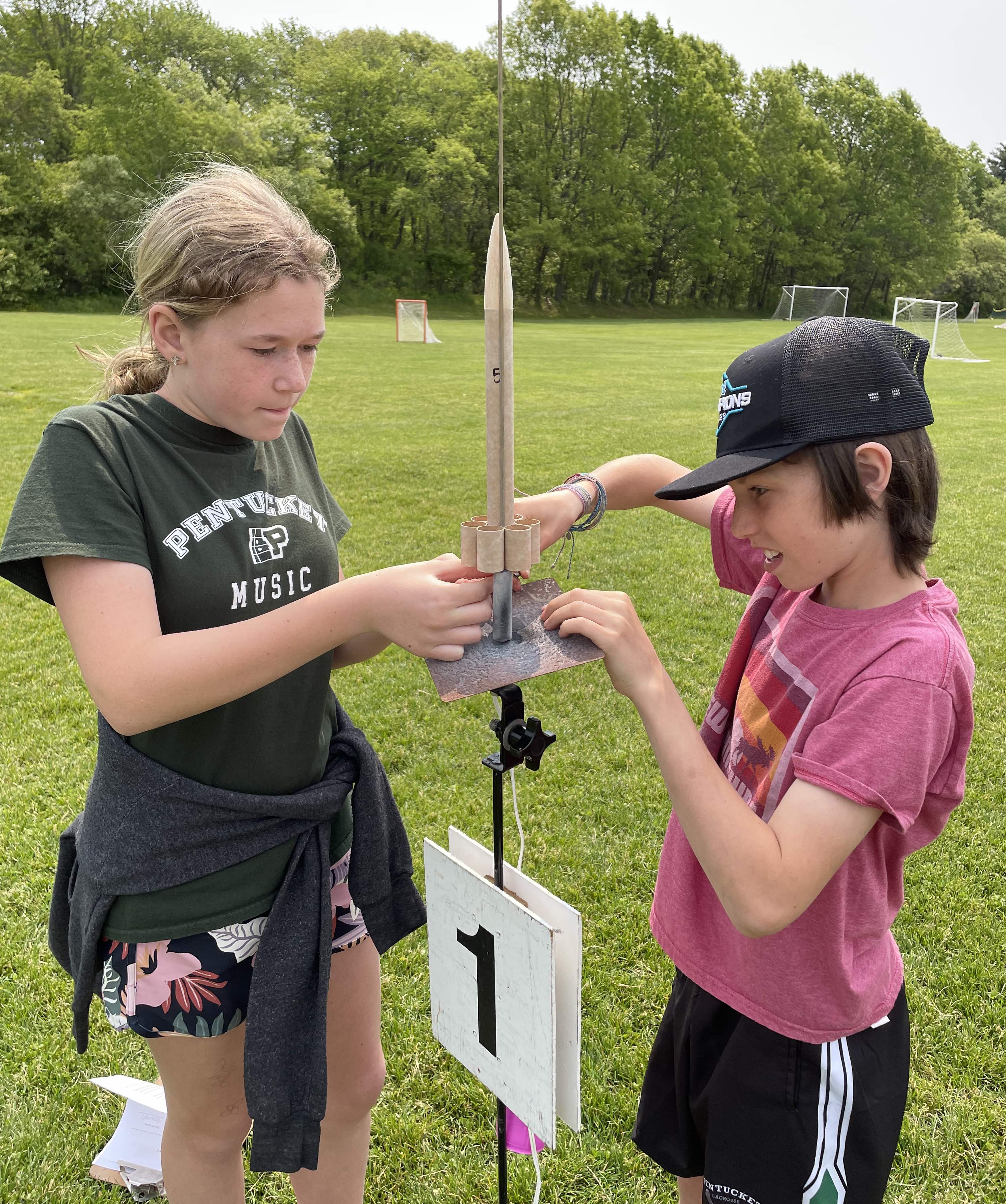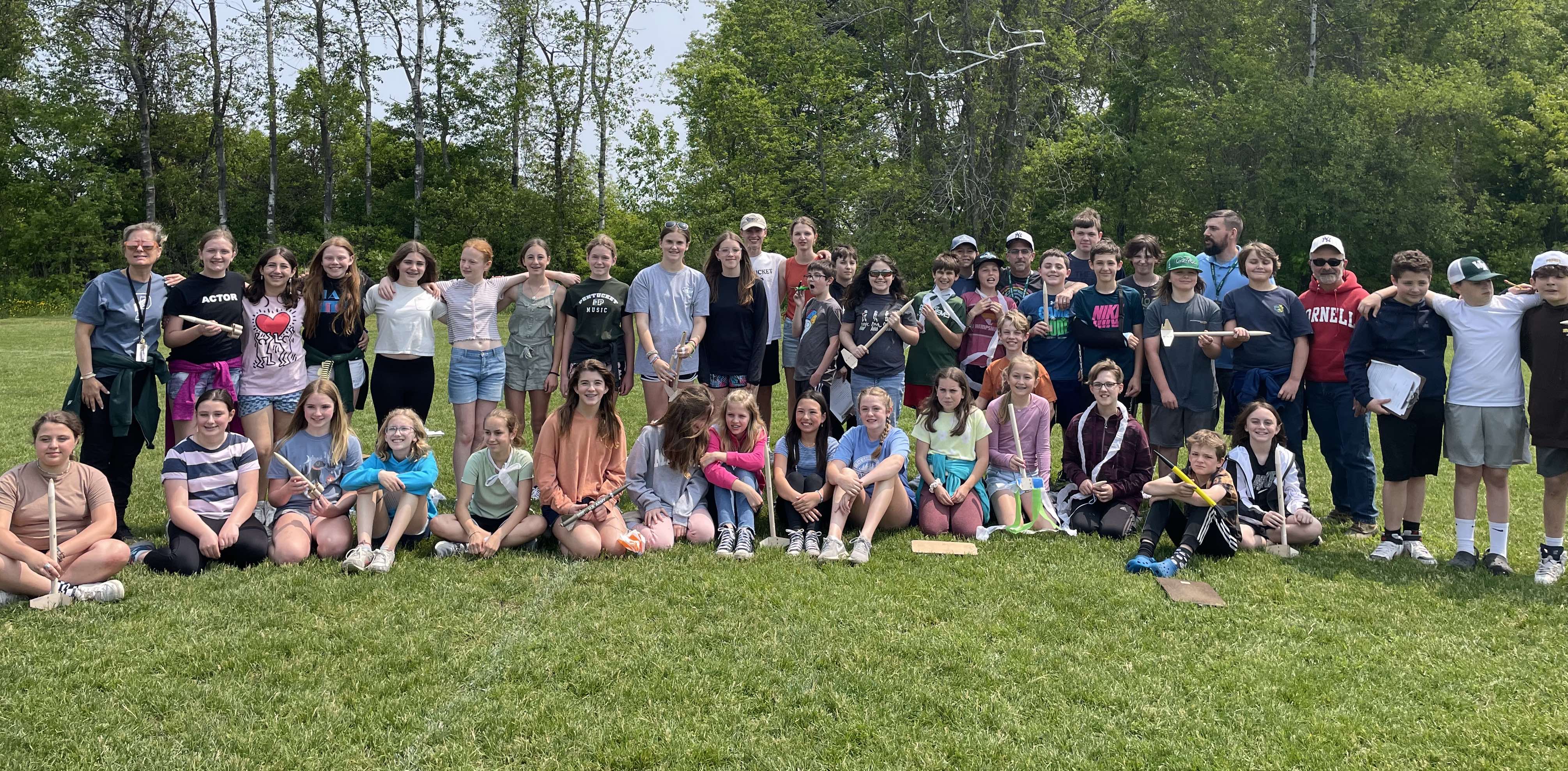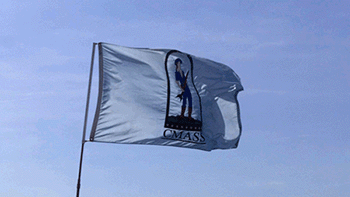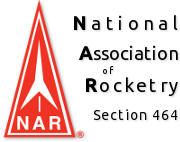 Our second year back after the Covid hiatus and it seems like we never left. The consensus is that this was one of the best years we have had. Everything just seemed to go smoothly. It's almost disconcerting - as if we missed something. If we did, then it could not have been important. This was a good year!
Our second year back after the Covid hiatus and it seems like we never left. The consensus is that this was one of the best years we have had. Everything just seemed to go smoothly. It's almost disconcerting - as if we missed something. If we did, then it could not have been important. This was a good year!
The class size this year was 40 students, a little more than last year, but the trend is still downwards and a lot smaller than the year we started in 2007 - 76 students in three homerooms. The students are in two homerooms again this year with the same team as last year, John Benvenuti and Trina Forrest. As usual, each homeroom builds a different rocket. FlisKits Thing-a-ma-jig is our constant. And for good reason, it is a great kit for first time builders. The components are well made and fit nicely; it goes together easily, tolerant of mistakes and flies very well. Our other rocket has always been the Custom Razor. This year, however, I decided to try something different and talked with Ray DiPaola of FlisKits about putting together a tube-fin rocket kit for us. Ray and I exchanged a few e-mails about what we needed, what he could provide, and pricing, and he came up with a great tube-fin rocket at a great price for us. 
Each year there seems to be some occurrence or characterization that best describes the unit that year. In early years, it almost always involved glue - usually too much. Then for a number of years, the kids seemed to be pretty good about glue - applying the correct amount or maybe too little, but not the gobs that were the norm in the first years. That time is over - we are back to 'too much glue' - way-to-much!
The first indication that this was going to be a good year was the prebuild session. The prebuild session is where a few students stay after school and help assemble parachutes, streamers and motor packets, fill glue bottles, prep each kit for the build session, and decorate the room with rocketry pictures and some of my rockets that I bring in. This usually takes about 90 minutes to two hours. This year everything was completed in less than an hour. I really thought we had forgotten to do something! Pictures in the Gallery.
As usual for the build, each homeroom as a different rocket, and we follow the same procedure during the build. I demonstrate how various parts go together - the 'dry-fit', with the kids just watching. The kids then do the same dry-fit and if all parts fit together nicely, we follow it with glue. In the middle of build session, we stop to allow the glue to set on the parts that were constructed so far, and I give a short lesson in rocketry, triangulation and some basic physics. We had two hours. this year for the Thing-a-ma-jig and 80 minutes for the new tube-fin rocket, which was enough time for both. The new tube-fin rocket went together very easily and will be our tube-fin rocket going forward. I really like it. I gave the class building the new rocket the assignment of coming up with suggestion for names for the rocket; and that I would pass their ideas on to Ray to see if he liked any. They came up with several. Two of the better ones were Panther (school mascot) and honeycomb (the view of the rocket from the bottom reminded the student of a honeycomb). I did e-mail Ray all of the suggested names - who knows...
Launch day always starts in John's homeroom. We have all the students prep their rockets for their first flight, with an A8-3 motor and parachute. We go over the procedure and rules for the launch, and the teams fill out their launch card. We had seven proctors for the launch, John as LCO, Trina helping students at the tracking station, two teacher aids helping at the reload table and general crowd control, myself as RSO and fixing problems and answering questions as needed. This year we also had my niece, Alina and her boyfriend Jack, both seniors at Pentucket HS, helping out. We had about 20 to 30 parents attending this year.
Each team launched their rocket twice, first on an A8-3, second on a B6-4. The teams use an Estes Altitrak and stopwatch to measure how high their rockets flew and average velocity at the tracking station 200 ft away from the launch pad. The rockets recover via chute on the A motor and then on a streamer for the B motor. Each year we get a big 'Wow!' from the kids and parents when we launch the first B motor. They are just amazed at how high it goes. The teachers and I love hearing it. It never gets old! We had a couple of rockets leave the field, two tree'd rockets, one lawn dart, no core samples, no CATO's, and one damaged rocket (easily repaired with CA for its next launch).
Three of the students brought their own rockets to launch and did so after all of the required launches were done. We had them announce their rocket and push the launch button. They all enjoyed that. I launched three of my own: corkscrew rocket, Too Cool for School (two-stage spool) and Frick-n-Frack. The Frick-n-Frack is a perennial favorite - everyone loves it. Finally, we launched six Thing-a-ma-jigs each with two 80 ft. streamers attached to its fins. This year we used the school colors; white and green. We got all six! The kids and parents really love this. We took our group shot, cleaned up the field and the kids headed back to school. That afternoon, they finished their calculations and completed a writing and drawing assignments for the unit. After all of the assignments have been graded, John and Trina will give them to me to look at. My summer reading!


